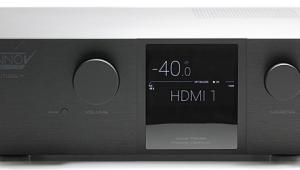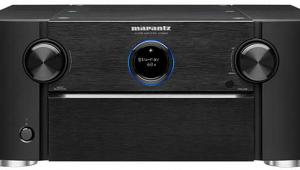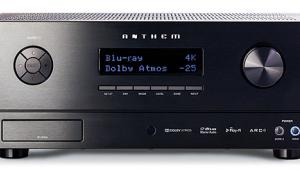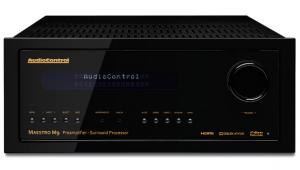Integra DHC-9.9 Surround Processor HT Labs Measures
Analog frequency response in Direct mode:
–0.05 dB at 10 Hz
–0.01 dB at 20 Hz
–0.00 dB at 20 kHz
–0.04 dB at 50 kHz
Analog frequency response with signal processing:
–0.30 dB at 10 Hz
–0.09 dB at 20 Hz
–0.24 dB at 20 kHz
–22.72 dB at 50 kHz

The above chart shows the frequency response of the left (aqua), center (green), LFE (purple), and left surround (red) channels at the preamp outputs of the Dolby Digital decoder. The left channel measures –0.01 decibels at 20 hertz and –0.26 dB at 20 kilohertz. The center channel measures –0.01 dB at 20 Hz and –0.21 dB at 20 kHz, and the left surround channel measures –0.01 dB at 20 Hz and –0.26 dB at 20 kHz. The LFE channel, normalized to the level at 40 Hz, is +0.11 dB at 20 Hz, reaches the upper –3-dB point at 96 Hz, and reaches the upper –6-dB point at 119 Hz.
Response from the multichannel input to the main output measures –0.05 dB at 10 Hz, –0.01 dB at 20 Hz, –0.01 dB at 20 kHz, and –0.05 dB at 50 kHz. The analog THD+N is less than 0.019 percent at 1 kHz with a 100-millivolt input and the volume control set to +3.5. Crosstalk with a 100-mV input was –95.16 dB left to right and –94.29 dB right to left. The signal-to-noise ratio with a 100-mV input from 10 Hz to 24 kHz with “A” weighting was –124.35 dBrA.—MJP
Video Test Bench
The DHC-9.9’s HQV Reon-VX processing passed all of our deinterlacing tests for both HD and SD video signals with no hiccups at all. This puts this processor on a short list of surround processors that offer this kind of video performance. Its scaling abilities with digital signals were also excellent, but I saw some slight noise when it converted analog sources to digital video. This is pretty common and one of the benefits you will see with more expensive designs that may use better analog-to-digital video converters. However, the noise was contained to only the finest detail, so it will rarely affect most everyday viewing. One other issue I saw with analog signals being converted to digital was clipping head room (above white) in the video signal. Below-black information passes. This eliminates some of the video signal’s dynamic range and can make calibration a bit harder. Thankfully, this was only an issue with cross-converted signals, and it didn’t show up with digital input signals.—KD
- Log in or register to post comments



























































